
Lophocampa is a genus in the subtribe Phaegopterina in the family Erebidae. It contains around 75 species.

Lophocampa affinis is a moth of the family Erebidae. It was described by Walter Rothschild in 1909. It is found in Mexico.
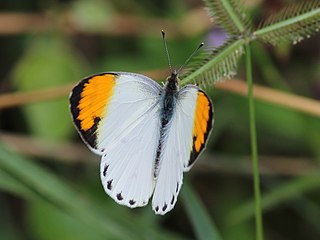
Colotis aurora, the sulphur orange tip or plain orange-tip, is a butterfly in the family Pieridae. It is found in Asia and Africa. The nominate subspecies, Colotis aurora aurora is found in India and Sri Lanka. The other subspecies, Colotis aurora evarne is found in Mauritania, Senegal, the Gambia, Mali, Burkina Faso, Ghana, Benin, Nigeria, Chad, Sudan, Ethiopia, Uganda, Kenya, Rwanda, Tanzania, the Democratic Republic of the Congo, Somalia, and southern Arabia.

Lophocampa atriceps is a moth in the family Erebidae. It was described by George Hampson in 1901. It is found in Colombia, Ecuador (Guayas) and Costa Rica.

Lophocampa sullivani is a moth in the family Erebidae. It is found in Ecuador (Pichincha) and Colombia.
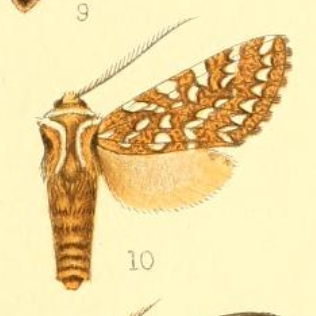
Lophocampa andensis is a moth in the family Erebidae. It was described by Schaus in 1896. It is found in Colombia.

Lophocampa hyalinipuncta is a moth in the family Erebidae. It was described by Rothschild in 1909. It is found in Ecuador, Peru and Bolivia.
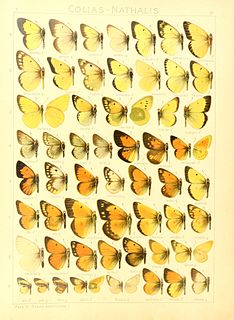
Colias lesbia is a butterfly in the family Pieridae. It is found in the Neotropical ecozone.

Lophocampa albipennis is a moth of the family Erebidae. It was described by George Hampson in 1904. It is found on the Bahamas.

Lophocampa atrimaculata is a moth of the family Erebidae. It was described by George Hampson in 1901. It is found in Costa Rica, Brazil, Bolivia and Peru.

Lophocampa citrina is a moth of the family Erebidae. It was described by Jan Sepp in 1843. It is found in Mexico, Honduras, Panama, French Guiana, Brazil, Venezuela and the Amazon region.

Lophocampa dognini, the Rothschild's marbled tiger, is a moth of the family Erebidae. It was described by Walter Rothschild in 1910. It is found in Peru.
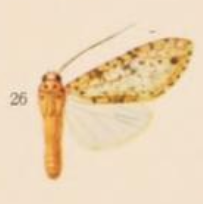
Lophocampa endrolepia is a moth of the family Erebidae. It was described by Paul Dognin in 1908. It is found in Ecuador.
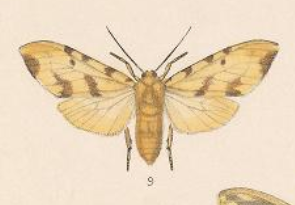
Lophocampa labaca is a moth of the family Erebidae. It was described by Herbert Druce in 1890. It is found in Jalisco, Mexico.
Lophocampa pectina is a moth of the family Erebidae. It was described by William Schaus in 1896. It is found in Mexico.
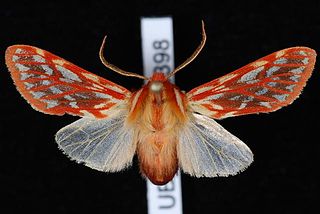
Lophocampa roseata, the rosy aemilia, is a moth of the subfamily Arctiinae. It was described by Francis Walker in 1868. It is found in North America in western Oregon, Washington and southwestern British Columbia. The habitat consists of conifer forests and urban landscapes.
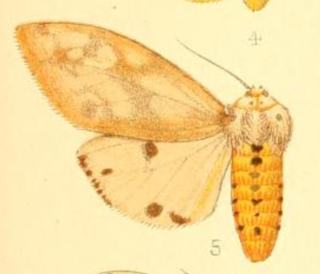
Spilosoma rava is a moth in the family Erebidae. It was described by Herbert Druce in 1898. It is found in Cameroon, the Democratic Republic of the Congo, Equatorial Guinea, Gabon, Ghana, Kenya, Liberia, Nigeria, Senegal, Gambia and Uganda.
Thyatira dysimata is a moth in the family Drepanidae. It was described by West in 1932. It is found in the Philippines (Luzon).
Anisoplaca cosmia is a species of moth in the family Gelechiidae. It was described by John David Bradley in 1956. It is found on Norfolk Island.
Prolita geniata is a moth of the family Gelechiidae. It was described by Ronald W. Hodges in 1966. It is found in North America, where it has been recorded from California and Nevada.

















